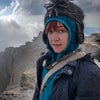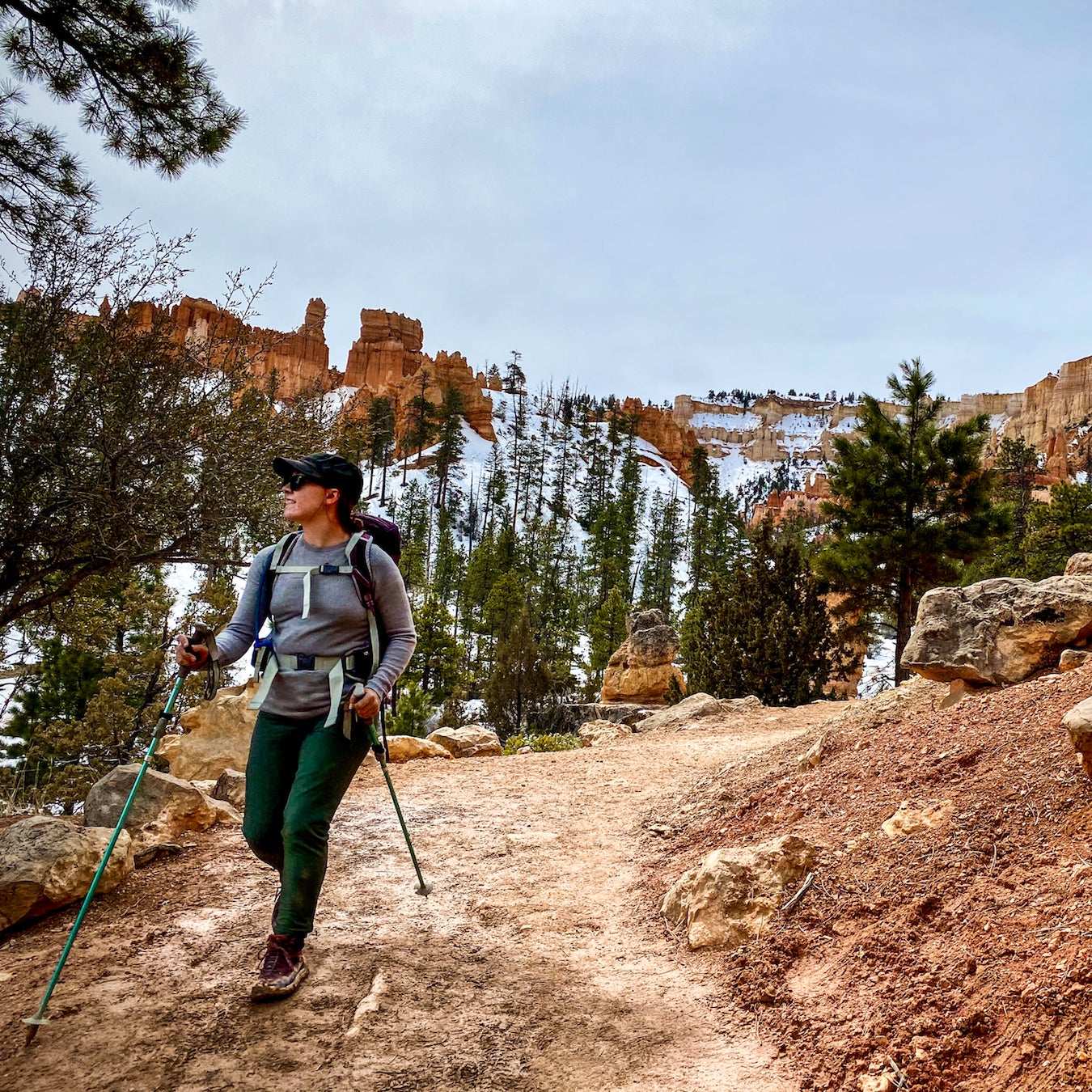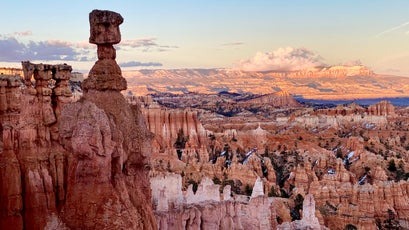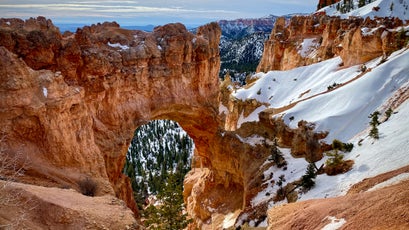62 Parks Traveler┬ástarted with a simple goal: to visit every U.S. national park in one year. Avid backpacker and public lands nerd┬á┬ásaved up, built out a tiny van to travel and live in, and hit the road. The parks as we know them are rapidly changing, and she┬áwanted to see them before itÔÇÖs too late.
Pennington has returned to traveling and is committed to following CDC guidelines during the COVID-19 pandemic to ensure the safety of herself and others. SheÔÇÖs visiting new parks as they open and closely adhering to best safety practices.
When I caught my first glimpse of Bryce Canyon, a big, toothy grin burst across my face. My eyes welled up with tears, and I felt for the first time in a long time that everything was going to be all right. You see, I had been driving alone for nine hours in the infancy of the COVID-19 pandemic, and even though it was early March and quarantine orders would not be implemented for weeks, my nerves were beginning to fray.
I stepped out of my van and walked toward┬áSunset Point, filling my lungs with chilly mountain air as I stared down at thousands of hoodoos appearing like jagged, red altarpieces below. The Paiute Indians┬áwho long ago called this┬áarea home believed that these thin spires of rock were once an entire race called the Legend People, who were turned to stone for bad deeds . The word ÔÇťhoodooÔÇŁ comes from the Southern Paiute word for being afraid:┬áÔÇťooh doo.ÔÇŁ Though the landscape looked whimsical at first glance, I began to feel the weight of its history as I explored deeper.
I woke early on my second day to catch the first rays of light from Sunrise Point and found myself transfixed by the thin frame of a limber pine tree, roots akimbo, clinging with all its might to what little earth it could grasp. I felt a strange kinship with the tree. In the exhausting wake of the pandemic, I could definitely relate.
Leaving behind the honey-colored light of morning, I set off in search of a long hike that would allow me a closer look at the hoodoos. In winter months, rockfall and snowmelt threaten many of the parkÔÇÖs trails, and closures are common. I settled on the QueenÔÇÖs GardenÔÇôPeekaboo Loop, a seven-mile lollipop-shaped traverse of Bryce CanyonÔÇÖs most infamous rock formations.
My boots puckered in orange, three-inch-thick mud for much of the trek, making grace a far-flung idea as I awkwardly clomped toward the terrace of delicately stacked hoodoos. Amid a throng of other tourists, I admired the massive figures from below for several minutes, an ant in their kingdom, then hiked on in search of solitude.
Soon┬áI was navigating┬áthrough ankle-deep snow with the immense sandstone towers surrounding the Peekaboo Loop around me. I began to feel a levity in┬ámy chest. I sat in silence among the rocks for a long while. Instead of emboldening my loneliness, their timelessness and utter indifference somehow comforted me. These rocks didnÔÇÖt care if I was sick or healthy, young or old, rich or broke.
It dawned on me that this land was here long before I came into the mix. ItÔÇÖll be here when this pandemic is over, and itÔÇÖll┬ábe here long after all of us are gone.
Beauty exists whether or not people are around to see it. I took solace in that bone-deep feeling. The earth inhales and exhales at its own tempo, on a timeline far too slow for humans to comprehend.
The places we love will outlive us, and isnÔÇÖt that just a little bit wonderful?
62 Parks Traveler Bryce Canyon Info
Size: 35,835 acres
Location: Southern Utah
Created In: 1923 (national monument), 1928 (national park)
Best For: Hiking, backpacking, geology, stargazing, cultural history
When to Go: Though winter can be snowy and cold (15 to 45 degrees), many roads are plowed, making Bryce Canyon a great year-round destination. Spring (23 to 65 degrees) brings less precipitation, while fall (23 to 70 degrees) and the busy summer months (44 to 81 degrees) delight visitors with near-perfect temperatures.
Where to Stay: ┬áoffers charming and affordable log cabin rentals (from $60) in nearby Tropic, Utah, for those unwilling to brave BryceÔÇÖs frigid nights. The park itself offers two official campgrounds: (open year-round;┬áfirst-come, first-served) and (April through┬áOctober;┬áreservations ).
Mini ║┌┴¤│ď╣¤═°: Hike the mile-long accessible trail from . This paved pathway is relatively flat for its entirety and┬ápasses┬áby educational signs and phenomenal views of BryceÔÇÖs electric-orange hoodoo amphitheater. Hike it as an out-and-back, or take an accessible shuttle to return to your vehicle.
Mega ║┌┴¤│ď╣¤═°: Go . The Under-the-Rim Trail stretches 23 miles from Rainbow Point to Bryce Point and has eight┬áovernight campsites for hikers to choose from. This is the best way to escape the crowds and commune with the rich lore of the hoodoos after dark. ItÔÇÖs best attempted spring through fall. Permit required.




